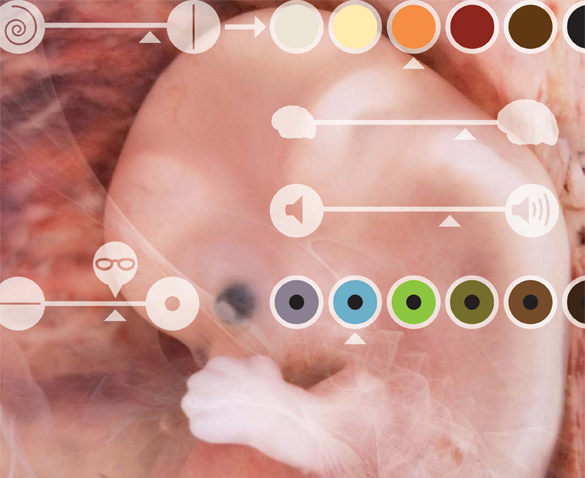Blog 6: BioTech + Art
The advancement of biotechnology has allowed humans to
transcend typical medical practices in just healing lives. With the ability to
fundamentally alter biological code, and even create life in itself, humanity
has crossed the border of playing both god and man. As much as a controversy
this subject raises, many scientific experts have agreed that this development
is inevitable, and it is a question of what regulations we place to control how
the technology is applied. Furthermore, the development of the biotech field is
not limited to just the scientific community, and has begun to play a bigger
role in the field of art. Through this week’s readings and lectures, I was able
to learn the different ways biotech has been represented as a form of art, and
the implications that arise with it.
 | ||
Designer Baby Attribution Selection Dramatization
|
The human body and mind is a topic of great interest for
many artists, as it is an avenue for expressing life in a way all humans can
understand. By being able to create life from scratch is the ultimate pursuit
that allows for infinite customization and artistic interpretations options. We
can see this in “Designer Babies”, where clients can request for the presence
or absence of certain traits during an artificial insemination process. By
being able to influence factors such as physical attributes and resistance to certain
diseases, the poster child of genetic perfection can be sculpted and bred. Other
ongoing biotech developments include the 3D printing of functional organs and
prosthetics that can be used in transplants. Even now, artists are finding a
way to customize prosthetic limbs to add unique twists of self-expression, and
this practice might even propagate to vital internal organs.
 |
| Scene from "Westworld" where artificial humans are being made |
While all this is fascinating, it does beg the question, “Who
has the rights/qualifications to tamper with this technology?” As of now, most
biotech developments, especially those pertaining to human lives/health, are
restricted to lab environments and medical professionals. However, some artists
feel like the restrictions are unreasonable and are inhibiting them from
expanding their art form. However, imagine if the ability to create and
manipulate human life was available without regulations. As seen in the TV
series, Westworld, tampering with artificial life has immense repercussions that
humanity is not prepared to take responsibility for.
References
·
Shaer, Matthew. "Soon, Your Doctor Could
Print a Human Organ on Demand." Smithsonian.com. Smithsonian Institution,
01 May 2015. Web. 14 May 2017.
·
"What is CRISPR-Cas9?" Facts. The
Public Engagement team at the Wellcome Genome Campus, 19 Dec. 2016. Web. 14 May
2017.
·
Alptraum, Lux. "How Long Before We Can
Build 'Westworld' Host Robots for Real?" Motherboard. N.p., 2 Nov. 2016.
Web. 14 May 2017.
·
Levy, Ellen K. "Defining Life: Artists
Challenge Conventional Classifications." Context Providers (2011): n. pag.
Web. 13 May 2017.
·
C.M. Kelty, Outlaw,
hackers, victorian amateurs: diagnosing public participation in the
·
life
sciences today, Jcom 09(01) (2010) C03
Comments
Post a Comment